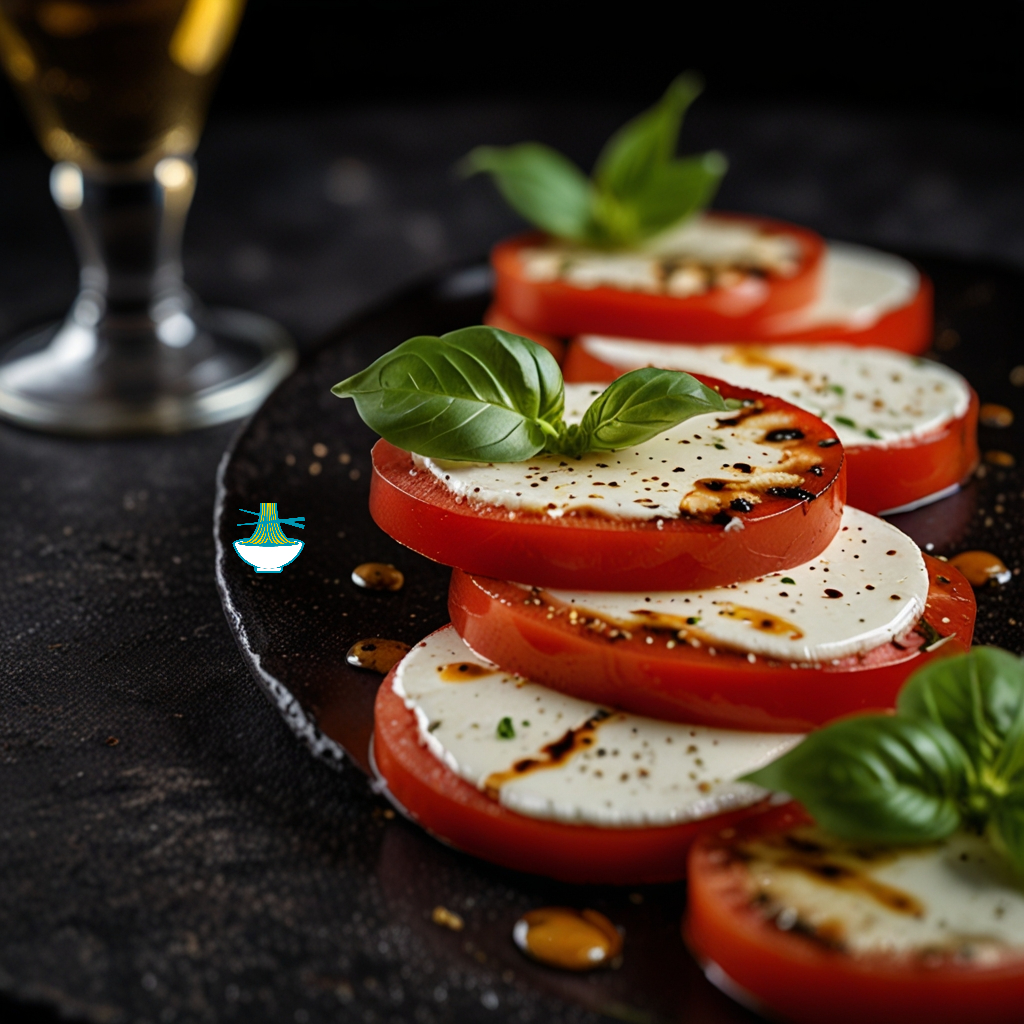Caprese Salad is a classic Italian dish that embodies simplicity and freshness. It consists of ripe tomatoes, creamy mozzarella cheese, fragrant basil leaves, drizzled with extra virgin olive oil and balsamic vinegar. The salad is known for its vibrant colors, resembling the Italian flag with red, white, and green elements.
The history of Caprese Salad dates back to the Isle of Capri in Italy, where it is believed to have originated. The salad's colors are said to represent those of the Italian flag, making it a patriotic dish. It gained popularity beyond Capri and is now enjoyed worldwide for its delicious combination of flavors and visual appeal.
Ingredients:
- Fresh ripe tomatoes
- Fresh mozzarella cheese
- Fresh basil leaves
- Extra virgin olive oil
- Balsamic vinegar
- Salt and pepper (optional)
Method of Preparation:
1. Wash and slice the tomatoes into medium-thick rounds.
2. Slice the fresh mozzarella cheese into similar-sized rounds.
3. Arrange the tomato and mozzarella slices on a serving plate, alternating them.
4. Tuck fresh basil leaves between the tomato and mozzarella slices.
5. Drizzle extra virgin olive oil over the salad.
6. Follow with a drizzle of balsamic vinegar.
7. Season with salt and pepper to taste if desired.
8. Serve immediately as a refreshing appetizer or side dish.
Nutrition Value:
1. Fresh ripe tomatoes:
- Calories: Approximately 18 calories per 100 grams.
- Carbohydrates: About 3.9 grams per 100 grams.
- Protein: Around 0.9 grams per 100 grams.
- Fat: Negligible, usually less than 0.2 grams per 100 grams.
- Sodium: Low, typically less than 5 milligrams per 100 grams.
- Cholesterol: None.
- Vitamins and minerals: Rich in vitamin C, vitamin A, vitamin K, potassium, and folate.
- Nutritional benefits: Tomatoes are high in antioxidants like lycopene, which may help reduce the risk of chronic diseases and support heart health.
2. Fresh mozzarella cheese:
- Calories: About 250 calories per 100 grams.
- Carbohydrates: Around 2.2 grams per 100 grams.
- Protein: Approximately 18 grams per 100 grams.
- Fat: About 20 grams per 100 grams.
- Sodium: Varies but can be moderately high, around 400-600 milligrams per 100 grams.
- Cholesterol: About 70-80 milligrams per 100 grams.
- Vitamins and minerals: Contains calcium, phosphorus, vitamin B12, and vitamin D.
- Nutritional benefits: Provides a good source of protein and calcium for bone health but should be consumed in moderation due to its higher fat and calorie content.
3. Fresh basil leaves:
- Calories: Approximately 23 calories per 100 grams.
- Carbohydrates: About 2.7 grams per 100 grams.
- Protein: Around 3.2 grams per 100 grams.
- Fat: Negligible, usually less than 0.5 grams per 100 grams.
- Sodium: Low, typically less than 5 milligrams per 100 grams.
- Cholesterol: None.
- Vitamins and minerals: Rich in vitamin K, vitamin A, vitamin C, manganese, and iron.
- Nutritional benefits: Basil contains antioxidants and essential nutrients, supporting immune function and providing anti-inflammatory benefits.
4. Extra virgin olive oil:
- Calories: About 884 calories per 100 grams.
- Carbohydrates: Negligible, usually less than 0.1 grams per 100 grams.
- Protein: Negligible, usually less than 0.1 grams per 100 grams.
- Fat: Approximately 100 grams per 100 grams, primarily monounsaturated fats.
- Sodium: Very low, typically less than 2 milligrams per 100 grams.
- Cholesterol: None.
- Vitamins and minerals: Contains vitamin E and small amounts of vitamin K.
- Nutritional benefits: Olive oil is rich in healthy fats, particularly monounsaturated fats, which may support heart health and reduce inflammation.
5. Balsamic vinegar:
- Calories: Around 88 calories per 100 grams.
- Carbohydrates: About 17.3 grams per 100 grams.
- Protein: Negligible, usually less than 0.1 grams per 100 grams.
- Fat: Negligible, usually less than 0.1 grams per 100 grams.
- Sodium: Low, typically less than 15 milligrams per 100 grams.
- Cholesterol: None.
- Vitamins and minerals: Contains small amounts of calcium, iron, and potassium.
- Nutritional benefits: Balsamic vinegar is low in calories and adds flavor without adding significant amounts of fat or sodium to dishes.
6. Salt and pepper (optional):
- Calories: Negligible.
- Carbohydrates: Negligible.
- Protein: Negligible.
- Fat: Negligible.
- Sodium: Varies based on quantity used.
- Cholesterol: None.
- Vitamins and minerals: Salt provides iodine, and pepper contains small amounts of vitamin C and manganese.
- Nutritional benefits: Salt is essential for electrolyte balance, while pepper adds flavor and may have antioxidant properties.


Comments